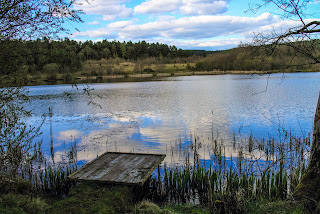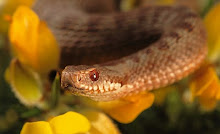Developers can build on nature reserves - if they 'offset' the damage elsewhere, says Government review
Today marks one of the darkest days in the history of the UK, where our natural world is concerned. Owen Paterson has, in effect given the green light for bulldozers to demolish our most diverse and unique wildlife habitats throughout the country.
When something is classified as a nature reserve, you would imagine and hope that it has been recognised as an area of significant importance and will therefore be protected? However, under Mr. Paterson's upcoming schemes we could see these tranquil and unique areas destroyed, to make way for development.
He goes on to say that this is OK as long as the damage is "offset" by creating similar habitats elsewhere.
So, what I would like to know and I expect you are asking yourself the same question; "how is it possible to re-create habitats that have taken centuries to mature and become established?"
Has he given any thought to this at all and I now wonder if he even knows what the word mitigation means?
Some of our most vulnerable wildlife such as the dormouse, great crested newt, water vole and adder can not just be lifted from one area and dumped in a man made equivalent a few miles or so away.
If this man thinks that this is OK and even achievable then he has concreted the fact that he knows very little about our natural world and environment. As he is supposedly our Environment Secretary, surely this proves that he should be replaced immediately before he destroys our wild places.
It will not matter if the targeted reserves are 10 square miles or just 1 square mile, if the chosen area has ancient and unique habitats, these will not be replicated by man overnight and whatever unique wildlife is living within will be lost forever.
If the wildlife is moved to an already established site, this will upset the balance and will lead to the significant loss a of number of the species in question.
Wildlife mitigation should be taken very seriously, especially where vulnerable, fragile species and habitats are involved. Sadly this seems to be something our Environment Secretary is either overlooking or ignoring.
In the Forest of Dean, we are already seeing this on a massive scale, losing one of our most diverse areas to development.
Among other wildlife, Northern United is home to the following species...
Great Crested Newt
Adder
Dormouse
Greater Horseshoe Bat
Lesser Horseshoe Bat
Work has already begun at this site. EU protected bats have already been seen flying for their lives as heavy machinery smashed down the buildings in which they roosted and work is soon to begin on a spine road, paving the way for the entire area to be concreted over.
So don't think your areas are safe for one minuet, as baron land is nothing more than a money making opportunity in their eyes!
We must all stand together to protect our most precious wild places before it is too late.
Telegraph Article - HERE
NORTHERN UNITED
 |
| This sight, along with the wildlife will soon be lost forever! |
 |
| Just some of the prime wildlife habitat, soon to be bulldozed to make way for a road! |
 |
| EU Protected Great Crested Newts are Present at Northern United |
Rob














